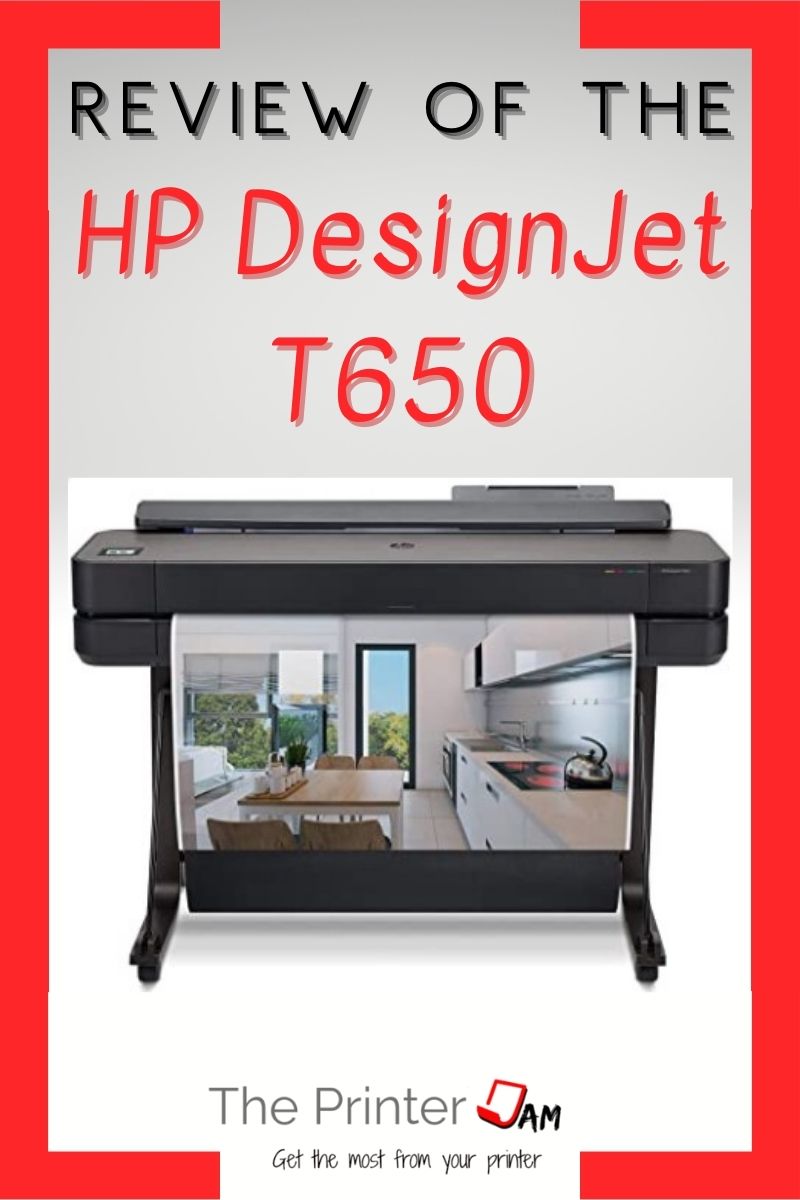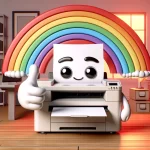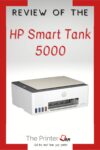
The HP DesignJet T650 is one of their latest large format printers. Designed for engineering or architect drawings, it can also do maps, presentations, or color posters. This plotter prints on a 36 inch paper roll, can feed cut sheet paper, and a bin to catch the paper.
This review will compare similarly featured and priced plotters to the HP DesignJet T650. It will cover the weaknesses and advantages. This information should help with any decision of which plotter to buy.
Based on my experience, the T650 is a solid performer. Previous models, such as the T730, have had few issues. HP plotters are usually very reliable from what I’ve seen.
Service calls I’ve done on this model so far have been for typical maintenance such as replacing a print head or the odd warranty call. Warranty calls don’t tell much about the reliability of a printer. Any new printer can occasionally see a power supply or sensor fail.
Why This Plotter?
Why someone would want this plotter is because they need precision printing of engineering, architectural, or technical drawings. Some plotters use a laser process and are B&W only. This plotter uses a color inkjet process.
Using an inkjet process allows for a wider range of paper types and thickness.
Another reason why this plotter would be considered is if you have a need for some color. Maps, graphs, or posters may be punched up with color. In those cases the HP DesignJet T650 would obviously be a better than a B&W plotter.
Although HP has a different wide format series for high quality graphic designs, artwork, or those type of color projects.
Fine lines, small text, and numbers found on most engineering drawings come out better on an inkjet with coated paper.
This is a magnified image comparing inkjet and laser printer output. On the left is an inkjet printer on coated paper. The right is from a laser printer.


Printing to a wide format printer isn’t always an easy process. There is usually a few more steps involved with the scaling and layout than a typical desktop printer.
HP has streamlined that process as much a possible.
Their print drivers and available print management software are easier to use than other plotter software I’ve used.
HP includes job submission software “HP Click” for this plotter. Which is fairly useful way to print PDF, JPEG, TIFF, DWF, HP-GL/2, and PNG files. Instead of opening a program to print a file, HP Click lets you just drag and drop files to print to the plotter. Setting up HP Click is as simple as entering the plotters IP address.
Why someone would consider this plotter:
- To print engineering drawings
- Need some color printing
- Easy to use and setup

Comparable Products
If you’re shopping for a wide format inkjet printer in this range the Canon prograf TA-30 orthe Epson Surecolor T5170 are probably printers being considered also. These wide format printers have similar price points and features.
The HP, Canon, and Epson have similar connectivity options, built in stands, ink costs, and print speeds. The HP is the fastest, that is if any wide format printer can be considered fast.
They all take 36 inch paper rolls but the HP will accept the thickest paper (11.8 mil). Compared to 8 mil of the other two. Which is adequate for most paper rolls. It may only be a concern printing on heavy canvas or vinyl.
These plotters are much more compact than ones using a laser process. All take up roughly the same space since they are on a stand with an exit bin sticking out.
I tested the weight and proportions with a standard ruler and scale. I found the HP DesignJet T650 weighs 80 lbs. Much lighter than the average plotter. The Canon and Epson outweigh the HP by 30 lbs.
My measurements revealed a printer 52 inches wide, 24 inches deep, and 36 inches high. Of course, that’s with the stand. On a desktop it’s height is only 12 inches high. Overall, a lightweight and small footprint for a plotter.
Canon Comparison
One difference with the Canon prograf TA-30 is it has 5 colors. In addition to cyan, magenta, yellow, and black Canon includes a matte black. Engineering drawings, maps, and line drawings in general are better with matte black ink. Which is one of the 4 colors of the HP DesignJet T650.
The extra color may slightly improve color charts or graphs but not so much with the drawings I’ve seen from the Canon.
While the Canon uses all pigment inks, the HP uses dye based ink for brighter colors (C/M/Y) and pigment black (matte) for durability.
While Canon’s ink is .05 cents lower per liter, this difference may be less than a hundred dollars over the life of the plotter. The lower initial price of the HP would more than make up the diffrence.
Perhaps it’s not that important but the overall shape of the Canon is round. When I’ve added ink cartridges to the Canon there’s nowhere to set anything. Everything slides off the top.
It’s common to take a fresh print from the exit bin and place it on top of the printer to examine. The large print can easily get sucked back into the plotter.
The HP comes with a cover for the paper roll while the Canon doesn’t. HP’s paper roll cover keeps anything from getting sucked in and gives it a relatively flat top.
Epson Comparison
The Epson also has a relatively flat top with a paper roll cover. Epson uses a nice plastic mesh material for its exit bin. This is another minor thing but the material the Canon uses for its exit bin is a magnet for paper dust.
HP uses a lightweight nylon, which is acceptable and seems to not attract as much dust as previous materials.
The Epson’s initial price is slightly lower than the HP. Epson’s ink cost per liter is also lower than the HP as well. The .09 cents per liter difference may be cancelled out by HP’s sparse use of ink. HP uses much less ink on maintenance cycles than previous models.
The Epson has the standard 4 color pigment inks though they doesn’t use matte black. It’s print quality is arguably better than the others but matte black ink does look better for engineering drawings.
The Epson would do well with posters, maps, or graphs. Though artwork or graphic designs would be better served by a presentation series of wide format printers.
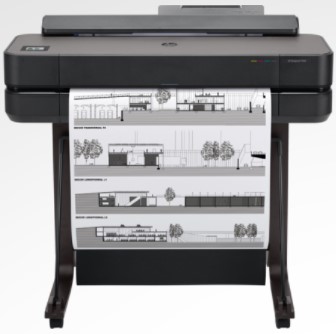
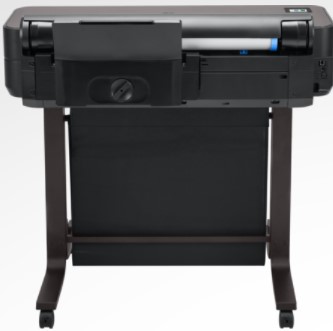
Benefits and Drawbacks
HP goes to a lot of trouble to make printing to this plotter easy. They have one click printing from a smartphone. Although I don’t think anyone is using a smartphone to print CAD drawings. It may come in handy for posters or graphs.
HP has streamlined their print driver for PC’s in general eliminating some steps. Though HP doesn’t have a specific PPD for this plotter for Mac’s.
One drawback is the cutter is a service item for the HP. Which means a tech like me is called to replace it. Though when I replaced the cutter I removed one cover screw, pulled out the old cutter, then snapped in the new one.
Also, cutters typically last a long time in my experience. Sometimes the life of the plotter.
That the HP accepts thicker paper than comparable plotters is an indication of a durable cutter.
The cutter is considered a consumable to be replaced by the end user with the Canon and Epson.
HP has improved the ink usage during maintenance cycles from previous models. It doesn’t waste as much ink during maintenance cycles.
Starting a new roll seems easier than before. Not that putting on the spindle is easy for any plotter. Just that when I loaded paper it happened with much less beeps, errors, or extended waiting periods.
In my experience success happened much quicker. Even when I did get an unsuccessful or skew message, the retry took in no time. The only drawback is it takes a 150 ft roll while most full size plotters take 300 ft rolls.
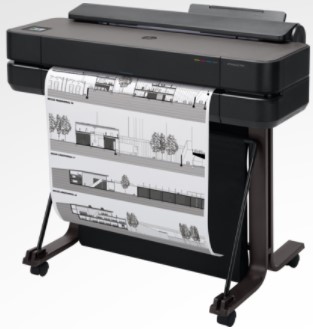
Deciding Factors
What the HP has going for it is ease of use and fine line quality. My test pages produced excellent quality maps and technical drawings.
From the print apps to adding paper this plotter is among the easiest to use. Between HP’s Click app and the streamlined print driver, printing large sizes is much simpler than other plotters I’ve worked with.
Also available here!

The Copier Guy, aka Dave. I’ve worked on scanners, printers, copiers, and faxes since 1994. When I’m not fixing them I’m writing about them. Although, I’m probably better at fixing them. I’ve worked with every major brand. As well as several types of processes. If it uses paper I’ve probably worked on one.
